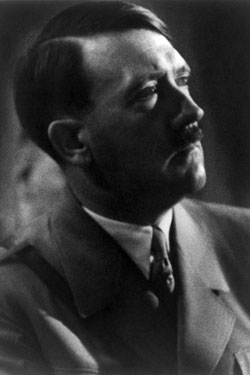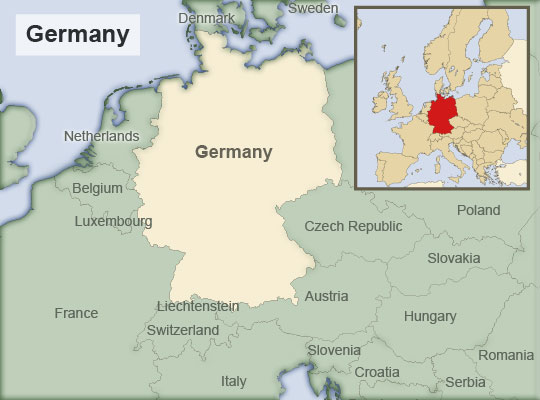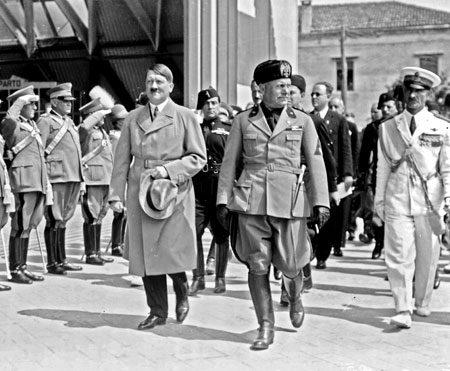Mussolini and Hitler
Like Mussolini, Adolph Hitler subscribed to the use of force and a tyrant-like rule. He rose to power during the early 1920s. Like Mussolini, Hitler was also wounded during World War I and did not like the direction his country, Germany, had taken preceding the war.

Adolph Hitler

Map and location of Germany
In 1919, he joined the Nationalist Socialist German Workers’ Party, or the Nazi Party. This was a small but growing political party. Because of his dynamic speaking and leading abilities, Hitler eventually took over the Nazi Party. Then in 1923, he attempted to take over the German government but was unsuccessful and, as a result of his plot, was sentenced to prison.
He used this time to write his infamous autobiography, Mein Kampf, which means “My Struggle.” Although the book provided an in-depth look at Hitler’s background, it also provided his rationale for the struggles the country faced. Additionally, Hitler provided a decisive strategy for improving the state of the nation. Within the pages of Mein Kampf, Hitler verbally attacked the Jewish population and accused them of sabotaging the prosperity of the country.
Hitler and Mussolini
Germany, like Italy, experienced a period of economic disparity after World War I. Hitler used the nation’s inflation and high levels of unemployment as a ploy to push the ideals of his Nazi Party to the forefront. He enticed other Germans with his promises of restoring Germany’s once-vast empire. His plan worked as more and more Germans endorsed the Nazi Party.
By 1933, the Nazis had become the largest party within the German Parliament. As a result, Hitler convinced parliament to give him dictatorial powers as he took on his new official title of Der Fuhrer, or “the leader.”